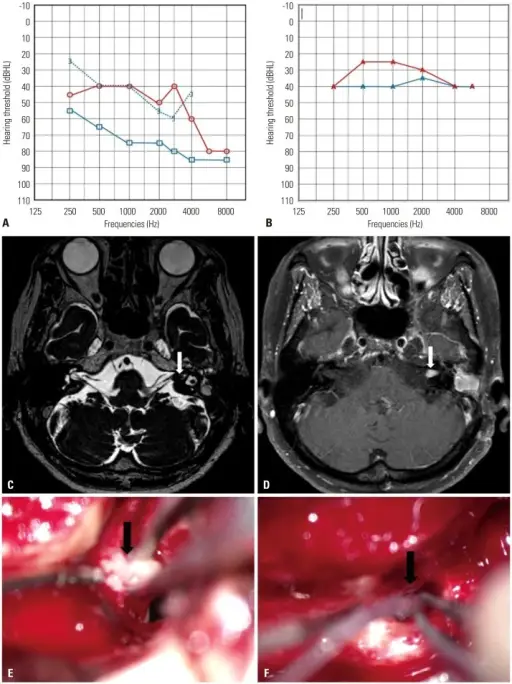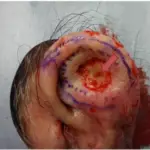Schwannoma of the ear is a neoplasm originating from Schwann cells.
What is the Pathology of Schwannoma of the Ear?
The pathology of schwannoma of the ear is:
-Etiology: The cause of schwannoma of the ear is not known.
-Genes: In most cases schwannomas occur spontaneously. Genetic disorders such as neurofibromatosis 2 (NF2), schwannomatosis, and Carney complex can cause schwannomas.
-Pathogenesis: The sequence of events that lead to schwannoma of the ear is tumor development from the schwann cells in the peripheral nervous system or cranial nerves.
-Histology: The histology associated with schwannoma of the ear shows interlacing fascicles of spindle cells with indistinct cytoplasmic borders, elongated and twisted nuclei. There is a biphasic population of Antoni A (cellular) and Antoni B (hypocellular, myxoid) patterns. Verocay bodies which are whorling or palisading of nuclei may also be appreciated.
How does Schwannoma of the Ear Present?
Patients with schwannoma of the ear typically are female present at the age range of 30s to 60s. The symptoms, features, and clinical findings associated with schwannoma of the ear include sensorineural hearing issues, tinnitus, and balance disturbances.
How is Schwannoma of the Ear Diagnosed?
Schwannoma of the ear may be diagnosed utilizing magnetic resonance imaging (MRI), computerized tomography (CT), X-rays, and ultrasounds. Balance, and hearing tests may also be utilized. Biopsy is confirmatory.
How is Schwannoma of the Ear Treated?
Schwannoma of the ear may be treated by excision.
What is the Prognosis of Schwannoma of the Ear?
The prognosis of schwannoma of the ear is fair.



